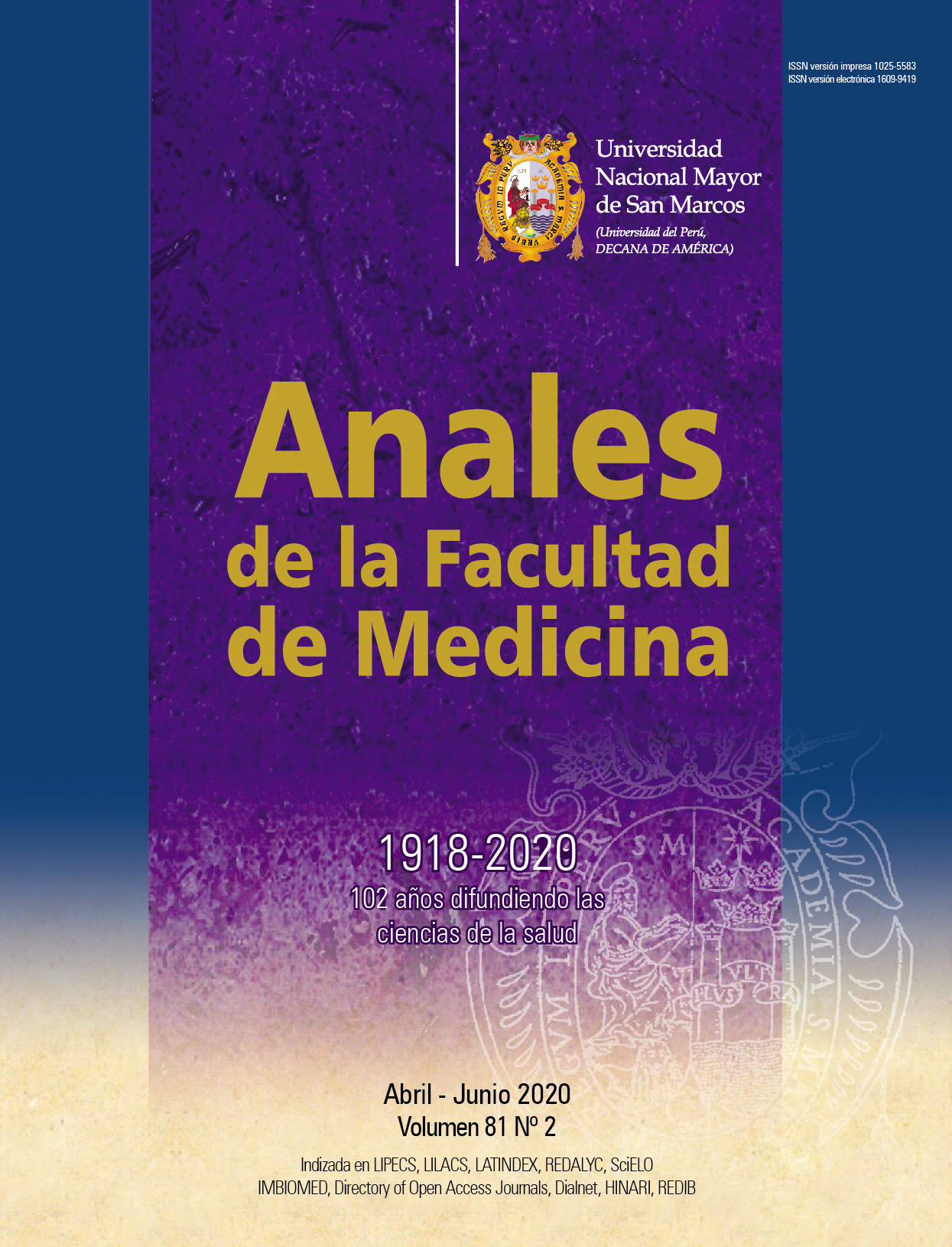Evolution of the COVID19 pandemic in the andean regions of Peru
DOI:
https://doi.org/10.15381/anales.v81i2.17774Keywords:
COVID 19, Andean regionsAbstract
La pandemia COVID19 en el Perú, según el Comunicado N°79 del Ministerio de Salud de fecha 27 de abril del año 2020, reportó 28 699 casos y 782 fallecidos, siendo las regiones de Lima, Lambayeque, Loreto y Piura, las que presentaron una mayor dificultad de manejo de esta enfermedad. Sin embargo, esto no sucede en las regiones andinas del sur de nuestro país, en el cual las cifras señalan un porcentaje alto de personas asintomáticas o que han evolucionado de manera favorable a la enfermedad. El ejemplo más resaltante es Puno en donde, según los comunicados del Ministerio de Salud, desde su primer caso identificado el 7 de abril del 2020 ha mantenido un crecimiento exponencial en su tasa de contagios; sin embargo, todos sus casos fueron asintomáticos. En el Cusco, la Sala de Situación COVID-19 de la Dirección Regional de Salud reportó que existieron 195 casos confirmados y solo 3 personas hospitalizadas en sala COVID y 1 en UCI COVID, registrando 4 fallecidos, de los cuales 3 fueron de nacionalidad extranjera. En Ayacucho, se tiene referencia que todas las personas afectadas por COVID19 se encuentran estables o con una evolución favorable de esta enfermedad. Existe evidencia que en otras regiones como el Tibet en China y en Bolivia, que tienen similares características geográficas, también existió una evolución favorable de la pandemia.
Downloads
Published
Issue
Section
License
Copyright (c) 2020 Anales de la Facultad de Medicina

This work is licensed under a Creative Commons Attribution-NonCommercial-ShareAlike 4.0 International License.
Those authors who have publications with this magazine accept the following terms:
- Authors will retain their copyrights and guarantee the journal the right of first publication of their work, which will be simultaneously subject to Creative Commons Attribution License that allows third parties to share the work as long as its author and its first publication this magazine are indicated.
- Authors may adopt other non-exclusive licensing agreements for the distribution of the version of the published work (eg, deposit it in an institutional electronic file or publish it in a monographic volume) provided that the initial publication in this magazine is indicated.
- Authors are allowed and recommended to disseminate their work over the Internet (eg: in institutional telematic archives or on their website) before and during the submission process, which It can produce interesting exchanges and increase quotes from the published work. (See El efecto del acceso abierto ).



